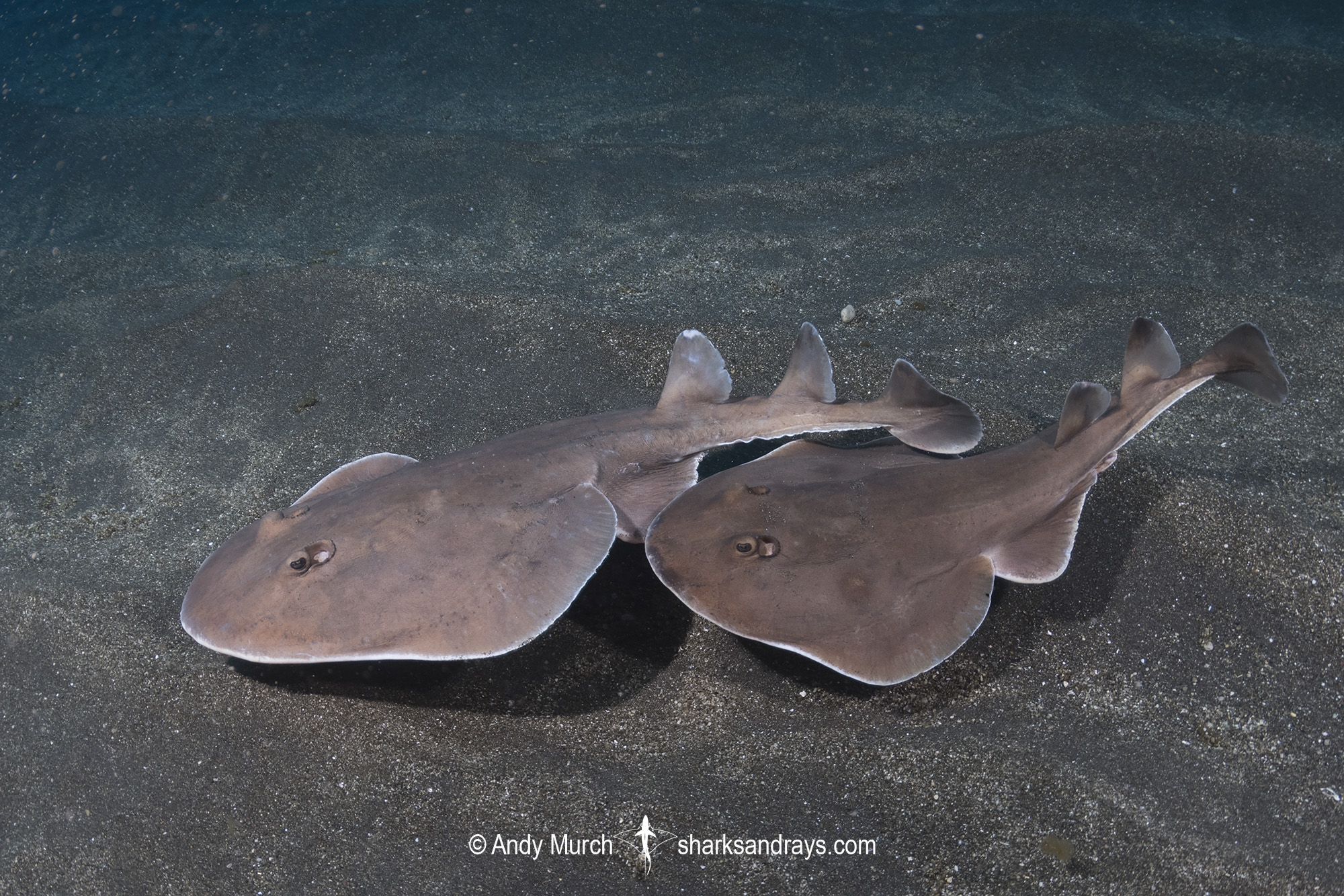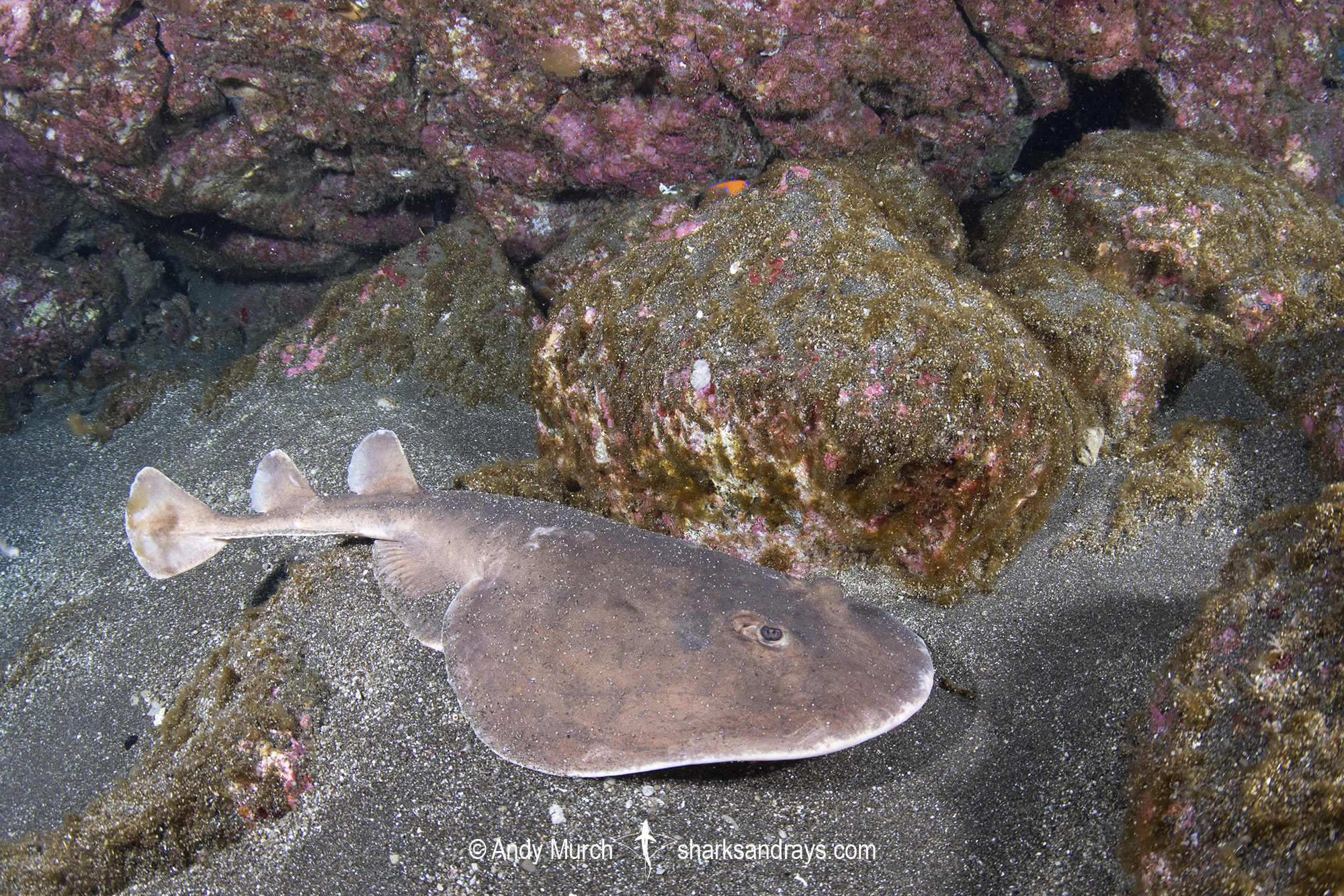Common name(s)
Cortez Electric Ray, Giant Electric Ray.
Identification
A very large electric ray with a sub-oval or spade-shaped disc that is slightly longer than wide. Snout rounded or obtusely angular. Anterior disc margins mildly convex. Pectoral fin apices broadly rounded. Eyes large and protruding, orbits approximately same size as spiracles. Spiracles sub-circular with numerous papillae on posterior margin. Nostrils small and round. Nasal flaps enlarged posteriorly. Nasal curtain short and wide, with a straight posterior margin.
Pelvic fins short and wide. Tail broad based, relatively long (equal to disc length), with a pronounced lateral keel. Dorsal fins tall and straight, with narrowly rounded apices and straight or weakly convex posterior margins. First dorsal origin anterior to pelvic fin posterior margin. Caudal fin sub-triangular, dorsal and ventral margins almost straight, posterior margin convex.
Colour
Dorsum light brown to greyish brown. Either unmarked or with 2-3 pairs of large dark spots on back, and a large dark blotch at the tip of dorsal and caudal fins . Ventrum white.
Size
Maximum length 75cm. Size at birth ~11cm.
Habitat
Tropical/subtropical seas. Benthic on soft substrates, often adjacent to reefs, also estuaries and subtidal zone. From very shallow inshore water to ~100m.
Distribution
Eastern Pacific. Found from the Pacific coast of Baja California Sur and throughout the Sea of Cortez, to northern Peru, including the Revillagigedo Islands (Socorro).
Conservation Status
VULNERABLE
The Cortez Numbfish (Narcine entemedor) is captured in industrial demersal trawl fisheries, trammel nets, and in artisanal gillnets. In the Gulf of California artisanal fishery, landings of Cortez Numbfish between 1997 and 2014 declined before returning to levels similar to the start of the time-series. In Guatemala between 1996 and 1998, this electric ray represented 15% of batoid bycatch in the industrial shrimp trawl fishery, but in 2006 it only represented 3.6%, suggesting a decline. In Colombia, relative abundance increased between 2001 and 2007, but average size decreased considerably. Overall, due to its exposure to inadequately managed fisheries throughout its range, apparent reductions in some areas but stable landings elsewhere, it is suspected that the Cortez Numbfish has undergone a population reduction of 30–49% over the past three generations (31.5 years), and it is assessed as Vulnerable A2bd.
Citation
Pollom, R., Avalos, C., Bizzarro, J., Burgos-Vázquez, M.I., Cevallos, A., Espinoza, M., González, A., Herman, K., Mejía-Falla, P.A., Morales-Saldaña, J.M., Navia, A.F., Pérez Jiménez, J.C. & Sosa-Nishizaki, O. 2020. Narcine entemedor. The IUCN Red List of Threatened Species 2020: e.T161716A124532986. https://dx.doi.org/10.2305/IUCN.UK.2020-3.RLTS.T161716A124532986.en. Downloaded on 01 June 2021.
Reproduction
Aplacental viviparous. Litter size up to 15. Gestation period 10-12 months.
Diet
Feeds mostly on benthic invertebrates, especially polychaete worms.
Behavior
Moves into shallow water at night to feed.
Reaction to divers
Easy to approach. Generally allows a close approach before moving away.
Diving logistics
The Cortez electric ray is commonly seen at many dive sites in the Sea of Cortez and is also regularly encountered at the Revillagigedo Islands.
Good spots to see this species in the Sea of Cortez include Cabo Pulmo, Mulege, Loretto, throughout the Midriff Islands.
What’s new
View our full list of updates
Similar species
Vermiculate Electric Ray Distinguished by pattern of pale botches and irregular lines.











